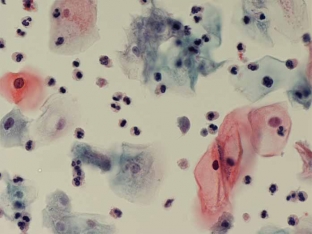Bacterial vaginosis is one of the most common non-inflammatory diseases in women. The essence of the disease is that representatives of the normal lactoflora of the vagina are replaced by anaerobic bacteria. Such a replacement very often occurs against the background of severe stress or hormonal fluctuations that a woman experiences, since in these cases the body's defenses are significantly weakened. Bacterial vaginosis can be triggered by many factors and have significant differences in the clinical picture depending on the health of the woman and her age.
Why and who develops bacterial vaginosis
Bacterial vaginosis is not sexually transmitted and can resolve on its own under certain conditions in a woman's life. As a rule, such conditions include the absence of stress and nervous shocks, a healthy lifestyle with proper nutrition and the absence of uncontrolled medication.
Obligate anaerobic bacteria begin to prevail over lactobacilli under adverse conditions, which depend on the state of health and emotional background of the patient, as well as on some exogenous factors. Moreover, a feature of bacterial vaginosis is that the genital tract is populated not by some specific pathogen, but by polymicrobial associations.
The following factors that are unfavorable for the female body become the reasons that provoke the development of bacterial vaginosis:
- hormonal fluctuations during puberty, during pregnancy, during perimenopause, during the phase of the menstrual cycle, for other reasons;
- taking medications (corticosteroids, antibiotics, antifungal, antiviral, hormonal), if this happens for a long time and, moreover, uncontrollably;
- incorrect hygiene, douching abuse;
- use of intrauterine device, as well as diaphragms, tampons, spermicidal ointments;
- intestinal problems;
- Vaginal cysts, polyps, conditions after surgery, including in the reproductive area.
The weakening of the body and the development of bacterial vaginosis can also cause acute infectious diseases, as well as the condition of the woman after childbirth.
What are the symptoms of bacterial vaginosis
The most characteristic and often the only symptom of bacterial vaginosis with which patients come to the gynecologist – This is a discharge with an unpleasant odor from the genital tract. The nature of the selections in this case can be completely different – gray or whitish, scanty or profuse, thin or sticky thick, but in any case there is a typical smell of stale fish.

Bacterial vaginosis discharge may appear sporadically and disappear, may be constant and persist for a very long time, their nature and consistency are also variable depending on the woman's age, her health and emotional state, sexual activity. Among the factors influencing the nature of the secretions and their intensity, the following can be noted:
- very intense work associated with nervous tension,
- frequent stress, mental trauma,
- hormonal disorders,
- somatic diseases,
- disorders of the reproductive system.
Bacterial vaginosis can occur with little to no symptoms, or it can cause discomfort during sexual contact, burning and itching, and painful urination.
Method of treatment of bacterial vaginosis and measures to prevent it
The treatment regimen for a patient with bacterial vaginosis is determined depending on the duration of the disease, the presence of changes in the reproductive system, the state of the hormonal background, concomitant and chronic diseases.
At the first stage, intravaginal antibiotics are usually recommended, although today their effectiveness is questioned, if necessary, antihistamines are prescribed. At the end of their intake, two weeks after the completion of the course, after the next menstruation, a control laboratory study is carried out. If, according to the results of the analysis, the treatment turned out to be effective, they proceed to the second stage – restoration of microflora. For this, prebiotics and eubiotics can be recommended, although many experts are inclined to believe that in this case, diet correction with the inclusion of a high content of fermented milk products, while excluding spicy and spicy foods, is no less effective. Repeated monitoring of the patient's condition is carried out in one and a half to two months.
As a warning of bacterial vaginosis, the patient is advised to refrain from uncontrolled and unreasonable use of antibiotics, antimycotics and hormonal drugs, use personal hygiene products wisely, monitor the condition of the intestines, regularly visit a gynecologist, especially if there are any disturbing symptoms.







Add a comment